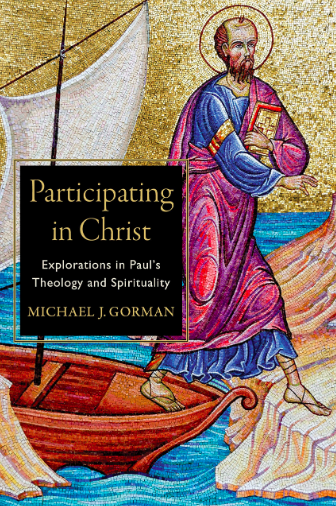 When Michael Gorman’s Inhabiting the Cruciform God appeared I read it and even assigned it for a class at Northern and it was there that I began tracking more closely the rather fresh use of “theosis” as a NT category for what is sometimes called “union” with Christ or “participation” in Christ.
When Michael Gorman’s Inhabiting the Cruciform God appeared I read it and even assigned it for a class at Northern and it was there that I began tracking more closely the rather fresh use of “theosis” as a NT category for what is sometimes called “union” with Christ or “participation” in Christ.
An Orthodox friend of mine had put me in touch in previous years with the Orthodox theory of theosis, which I found stimulating even if quite strange to my Western ears-way of thinking, so when Gorman used it I began to probe if it was really the same. No and yet some Yes, is what I thought.
Not long ago I read Grant Macaskill’s attempt to dislodge theosis from Pauline theology in his book, Union with Christ in the New Testament, which I found complicating the issue (which can be good) but disappointing (in not really taking us deeper into the conversation, and his forming it all through “covenant” is a parallel, not penetrating, idea) — yes, he made some good points about the history of the term. His more recent smaller book of lectures didn’t do much for the discussion. Yes, the notions of union and participation are probably more organic to NT categories but they are on the way to theosis and there are some elements of theosis that perhaps can clarify the discussion.
In Gorman’s newest book he takes us further into this discussion about theosis: Participating in Christ: Explorations in Paul’s Theology and Spirituality (#ad).
A quick brief of his on what he is talking about.
Because justification is transformative participation in the life of the God who is revealed in Christ, justification itself entails what the Christian tradition has called theosis, or deification.
Elsewhere I have defined “theosis” in the Pauline context as “transformative participation in the kenotic, cruciform character of God through Spirit-enabled conformity to the incarnate, crucified, and resurrected/glorified Christ.”
I’d put it this way: not quite theosis, of course, but moving in that direction. This very notion of union with Christ, being “in Christ” and “participation in Christ” along with the our indwelling the one who is the fullness of God — well, we’re getting there. Gorman makes four big points:
1. Because this God is revealed in a Messiah who was crucified before being glorified, it is cruciform theosis.
2. At the same time (as we emphasized in chap. 3), such cruciform participation in Christ is suffused with the life of the resurrected/glorified Christ, which makes it life-giving; this cruciform theosis is, paradoxically, resurrectional. Indeed, otherwise it would not be theosis.
3. We must also stress that for Paul theosis is a communal or corporate reality, not merely an individual experience;2 in 2 Corinthians 5:21 Paul says that God acted “so that we would become” God’s righ4.
4. Finally, realizing this corporate, cruciform, resurrectional theosis constitutes the goal of Paul’s mission because he believes it is the mission of God. In sum, theosis in Paul is corporate, cruciform, resurrectional, and missional.
After mentioning Macaskill and not engaging him much, Gorman sets out three ground rules:
First of all, no interpretation of theosis can compromise the Creator-creature distinction.
Second, a text that is theotic will identify, implicitly or explicitly, either one or more divine attributes or else a general divine likeness that is the goal of transformation.
Third, since the New Testament is inherently Christocentric (concerned with the identity and significance of Jesus), there normally needs to be a christological assumption in a potentially theotic text (or its co-text), whether explicit or implicit, that Christ participates in the divine identity.
Gorman is a NT exegete so he focuses on NT texts: 2 Cor 3:18 and 5:21 and then the grace of God in Christ that becomes the grace of of God in us in 2 Cor 8:9.











